Prosthetic knees are a marvel of modern engineering, designed to restore mobility and independence to individuals who have experienced above-knee limb loss. These devices replicate the complex mechanics of the human knee, allowing users to walk, climb stairs, and perform daily activities with confidence. While they may appear simple on the surface, prosthetic knees are powered by sophisticated technologies that make them highly functional and adaptable.
In this article, we’ll take a closer look at how prosthetic knees work, exploring the technologies that drive their performance and the factors that influence their selection. Whether you’re a user, a caregiver, or a business looking to innovate in this space, understanding these technologies is key to making informed decisions and creating impactful solutions.
The Basics of Prosthetic Knees
Prosthetic knees serve as an artificial replacement for the natural knee joint, mimicking its movement to provide stability and mobility. These devices are a critical component of above-knee prosthetic systems, connecting the prosthetic socket (which houses the residual limb) to the lower limb components, such as a pylon or foot.
The Role of the Prosthetic Knee
The human knee is a hinge joint, but its function extends far beyond simple flexion and extension. It plays a vital role in absorbing impact, maintaining balance, and adjusting to changes in terrain. A prosthetic knee must replicate these functions to ensure that the user can walk naturally and safely.
For users, the choice of a prosthetic knee is influenced by factors such as activity level, weight, and personal goals. While some may prioritize stability for walking on flat surfaces, others might require advanced functionality for navigating uneven terrain or engaging in physical activities.
Businesses must understand these diverse needs to develop prosthetic knees that offer a range of features, from basic designs to high-tech solutions.
Providing personalized consultations and demonstrating how different technologies work can help users feel confident in their choice.
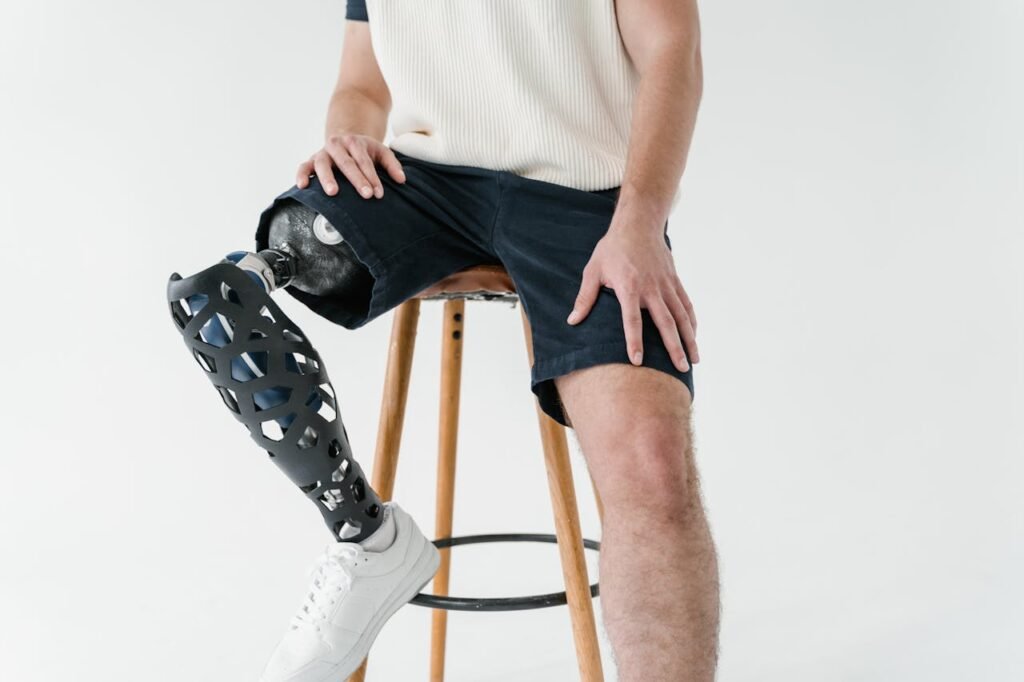
A Foundation of Stability and Movement
At its core, a prosthetic knee replicates the dual roles of the natural knee: providing a stable foundation during standing or weight-bearing phases and allowing controlled motion during walking or other activities.
This balance between stability and flexibility is essential to preventing falls and enabling smooth transitions from one activity to another.
For users, the stability provided by a prosthetic knee fosters confidence, especially when tackling challenging terrains or performing complex movements like climbing stairs.
Businesses must emphasize these foundational benefits when introducing their products, ensuring that users understand how each design prioritizes safety and natural motion.
Offering real-life demonstrations can illustrate how the knee responds dynamically to shifts in weight or changes in terrain.
The Mechanics of Weight Distribution
One of the primary functions of a prosthetic knee is to manage weight distribution effectively. As users walk, the knee must bear varying levels of pressure and respond dynamically to shifts in force.
Advanced prosthetic knees incorporate mechanisms to ensure smooth weight transfer, reducing strain on the residual limb and improving overall comfort.
Businesses should focus on integrating these features into their designs while educating users about the importance of proper alignment and fit.
Providing resources or training sessions that teach users how to adjust their gait or posture to optimize weight distribution can significantly enhance user satisfaction and reduce fatigue.
Customization for Individual Needs
No two users have identical needs, making customization a cornerstone of effective prosthetic knee design. Factors such as weight, height, activity level, and amputation level all influence the choice of a prosthetic knee.
For example, a young athlete may require a knee capable of supporting high-impact activities, while an older individual may prioritize ease of use and stability.
For businesses, developing modular or adjustable prosthetic knees can address this diversity. Allowing users to fine-tune their device to match their unique requirements enhances the prosthetic’s effectiveness and extends its lifespan.
Marketing materials that highlight these customization options and their practical benefits can resonate strongly with prospective customers.
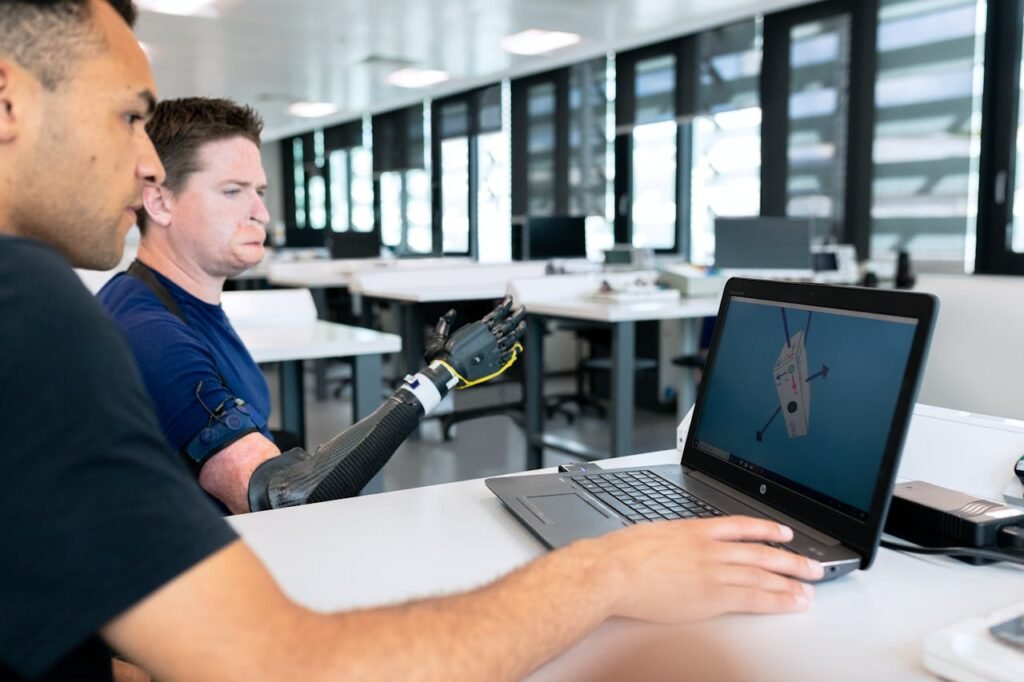
Compatibility with Other Components
A prosthetic knee’s performance depends not only on its internal mechanics but also on how well it integrates with other components, such as the socket, pylon, and foot.
Compatibility is crucial for ensuring a seamless user experience, as mismatched components can lead to discomfort, instability, or reduced functionality.
Businesses should prioritize compatibility by offering systems designed to work harmoniously across a range of components.
Partnering with other manufacturers to create standardized connection systems or providing comprehensive guides to compatible parts ensures users can build a prosthetic system tailored to their needs without unnecessary complications.
Strategic Opportunities for Businesses
Understanding the basics of prosthetic knees opens doors for businesses to deliver exceptional value to their customers. Beyond developing high-quality products, companies should focus on creating educational initiatives that empower users to make informed decisions.
Offering workshops, virtual consultations, or detailed product manuals can help users grasp the nuances of prosthetic knee technologies and feel confident in their choices.
Additionally, businesses should emphasize the importance of regular maintenance and care. Educating users about how to clean, adjust, and troubleshoot their prosthetic knee ensures long-term satisfaction and performance.
Creating subscription plans for maintenance services or replacement parts can build recurring revenue streams while reinforcing the brand’s commitment to user success.
Types of Prosthetic Knees
Prosthetic knees come in various designs, each offering unique features to cater to specific user needs. The primary categories include mechanical knees, hydraulic knees, and microprocessor-controlled knees. Let’s delve into each type to understand how they function and what makes them suitable for different scenarios.
Mechanical Prosthetic Knees
Mechanical knees are among the most common types of prosthetic knees, known for their simplicity and durability. These devices operate using a single-axis or polycentric design, allowing them to mimic the basic motion of the knee joint.
- Single-axis knees rely on a straightforward hinge mechanism that provides a fixed point of rotation. While they offer stability, they may require users to develop specific techniques for smoother walking.
- Polycentric knees, on the other hand, feature multiple pivot points, allowing for a more natural motion and improved stability during stance and swing phases.
Mechanical knees are often chosen for their affordability and low maintenance requirements. Businesses should highlight these advantages when marketing them to users with limited mobility or those seeking cost-effective solutions.
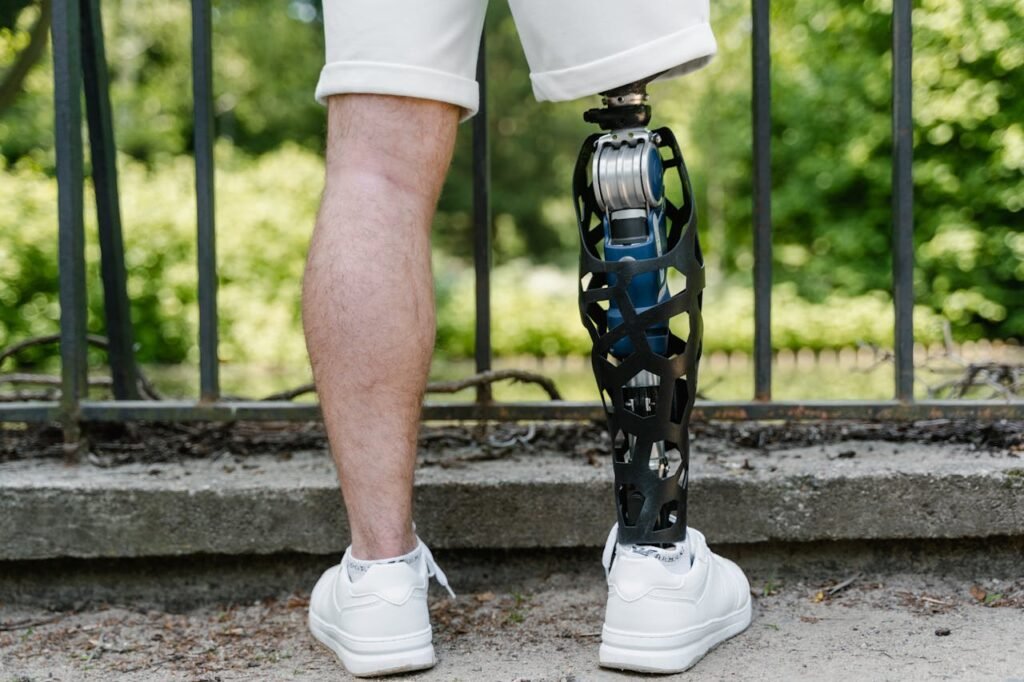
Hydraulic Prosthetic Knees
Hydraulic knees use fluid-filled chambers to control movement, offering greater flexibility and adaptability compared to mechanical designs. By adjusting the resistance of the hydraulic fluid, these knees can adapt to changes in walking speed, terrain, or activity level.
This adaptability makes hydraulic knees ideal for users who lead active lifestyles or need enhanced stability for varied environments.
Businesses can emphasize the smooth and natural movement provided by hydraulic systems, showcasing their ability to support dynamic activities like hiking or cycling.
Microprocessor-Controlled Knees
Microprocessor-controlled knees represent the cutting edge of prosthetic technology. These devices are equipped with sensors and processors that analyze the user’s movements in real time, adjusting resistance and movement accordingly.
For example, a microprocessor knee can detect when the user is walking uphill and increase resistance to provide stability. Conversely, it can reduce resistance during downhill walking or sitting, ensuring a seamless and intuitive experience.
Businesses investing in microprocessor knees should focus on educating users about the benefits of these advanced features. Demonstrations, testimonials, and clear explanations of how the technology works can help build trust and highlight the value of these devices.
The Inner Mechanics of Prosthetic Knee Technologies
Understanding the inner workings of prosthetic knee technologies is crucial for appreciating how these devices replicate natural movement. Each type of prosthetic knee leverages unique mechanisms to deliver stability, control, and adaptability, ensuring that users can perform a range of activities confidently and safely.
Mechanical Knees: Simple Yet Reliable
Mechanical prosthetic knees are built around basic pivot systems that enable the knee to bend and straighten. The single-axis design operates with a fixed hinge, making it straightforward but less versatile.
While this simplicity reduces maintenance, users may need to develop their gait techniques for smoother walking, as the device doesn’t adapt dynamically to varying speeds or terrains.
Polycentric mechanical knees, however, incorporate multiple pivot points that create a more natural motion arc. This design improves stability during weight-bearing phases and helps shorten the prosthetic limb when swinging forward, reducing the risk of tripping.
For businesses, focusing on innovations within mechanical knee designs—such as lightweight materials or enhanced locking mechanisms—can provide added value to users who prefer durable and straightforward solutions.
Hydraulic Knees: Adaptive Motion Through Fluid Dynamics
Hydraulic prosthetic knees rely on cylinders filled with fluid (often silicone oil) to control movement resistance. As the user moves, the fluid flows through valves that can be adjusted to modulate how quickly the knee bends or straightens.
This adaptability allows hydraulic knees to respond to changes in walking speed or terrain. For example, walking uphill may require more resistance to prevent the knee from collapsing, while downhill walking requires less resistance for smoother transitions.
Businesses can enhance the appeal of hydraulic knees by exploring modular designs that let users fine-tune their settings. Providing educational resources or training sessions on how to adjust hydraulic resistance ensures users feel confident in customizing their prosthetic to meet their needs.
Microprocessor Knees: Intelligent Adaptation
Microprocessor-controlled knees represent a leap forward in prosthetic innovation. These devices are equipped with sensors that collect data about the user’s movements, such as stride length, weight distribution, and speed. The built-in microprocessor analyzes this data in real time and adjusts the knee’s resistance accordingly.
For instance, if the user transitions from walking to standing, the microprocessor locks the knee to ensure stability. Similarly, when navigating stairs or uneven terrain, the device adapts to provide the right balance of flexibility and support.
For businesses, investing in microprocessor technologies offers a chance to deliver cutting-edge solutions that cater to a diverse range of users. Demonstrating how these knees enhance mobility and safety, especially in complex environments, helps establish their value.
Highlighting features like rechargeable batteries, programmable settings, and future software updates can also position the device as a long-term investment.
Comparing Technologies for User-Specific Needs
No single prosthetic knee is universally ideal; each type is designed to meet specific requirements based on the user’s lifestyle, mobility level, and personal goals. Helping users navigate these choices is a critical responsibility for businesses, as selecting the right technology can significantly impact their quality of life.
Stability vs. Adaptability
For users who prioritize stability, such as older individuals or those with limited mobility, mechanical knees offer a dependable option. Their straightforward design ensures reliability and reduces the learning curve.
Conversely, active users who navigate varied terrains or engage in sports may benefit from the adaptability of hydraulic or microprocessor knees.
Businesses should guide users through a thorough assessment of their daily routines and physical capabilities. Offering trial sessions or demonstrations allows users to experience how each technology performs in real-world scenarios, helping them make informed decisions.
Cost Considerations
Affordability is another critical factor when choosing a prosthetic knee. Mechanical knees are typically the most cost-effective option, making them accessible for users with budget constraints or limited insurance coverage.
Hydraulic and microprocessor knees, while more expensive, provide advanced features that justify their higher price point for users seeking enhanced functionality.
For businesses, transparent pricing and financing options can help users evaluate their choices without feeling overwhelmed. Partnering with insurance providers or offering payment plans ensures that advanced prosthetic technologies remain accessible to a broader audience.

Weight and Comfort
The weight of a prosthetic knee can influence user comfort and fatigue. Lightweight materials such as titanium or carbon fiber are often used in advanced designs to reduce strain without compromising strength. For users who prioritize comfort during extended wear, these options can make a significant difference.
Businesses should emphasize the material innovations in their products, showcasing how lightweight designs improve user experience. Including testimonials or user stories that highlight comfort benefits can further reinforce the appeal of these technologies.
Actionable Advice for Businesses
To succeed in the prosthetics market, businesses must not only understand the technologies behind prosthetic knees but also anticipate user needs and deliver exceptional support. Here are some strategies to create meaningful impact and drive innovation.
Invest in Research and Development
Continuous innovation is essential for staying competitive in the prosthetics industry. Investing in R&D allows businesses to refine existing designs, explore new materials, and incorporate emerging technologies like AI or IoT.
Collaborating with research institutions or industry experts ensures access to the latest advancements and accelerates the development of cutting-edge solutions.
Focus on Personalized Fitting and Training
No two users are the same, and the effectiveness of a prosthetic knee depends on how well it aligns with the individual’s anatomy and lifestyle.
Providing personalized fittings and tailored training programs helps users maximize the benefits of their device. Businesses should consider offering in-clinic or virtual training sessions that teach users how to adapt to their prosthetic and utilize its full capabilities.
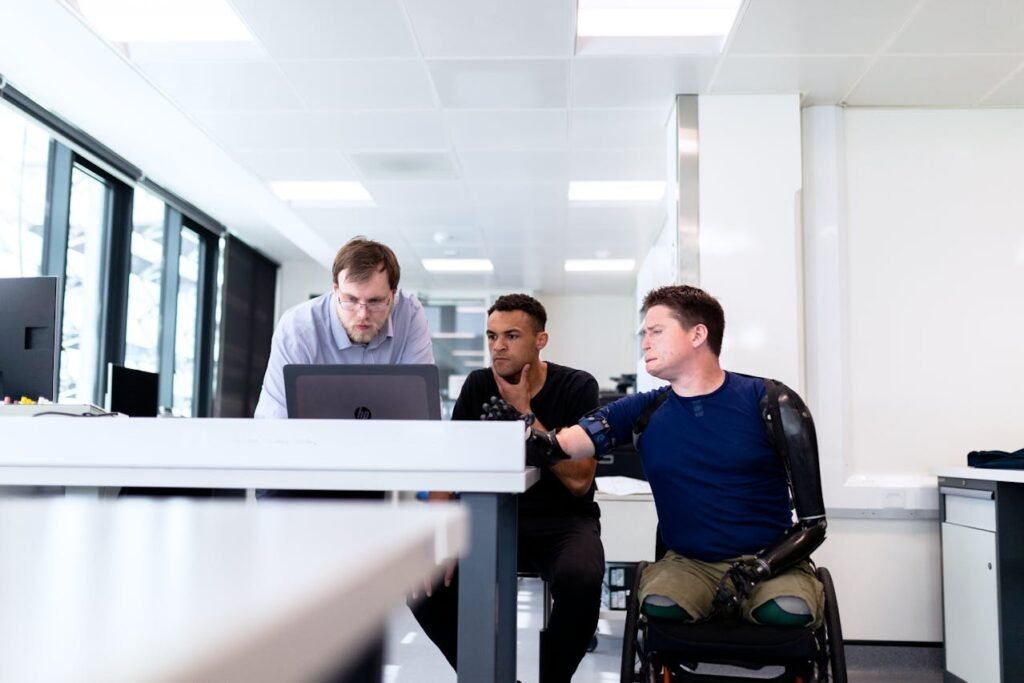
Build Long-Term Relationships
The journey of using a prosthetic knee extends far beyond the initial fitting. Businesses must focus on building long-term relationships by offering ongoing support, such as regular maintenance checks, software updates, or access to replacement parts.
Creating loyalty programs or subscription services for servicing needs reinforces trust and ensures user satisfaction.
Future Trends in Prosthetic Knee Technology
The future of prosthetic knees is driven by innovations that aim to make these devices even more intuitive, efficient, and integrated into users’ lives. As technology advances, the next generation of prosthetic knees is expected to deliver greater adaptability, improved comfort, and enhanced functionality, transforming how users interact with their prosthetics and the world around them.
Neural Interfaces for Seamless Control
One of the most promising developments in prosthetic knee technology is the integration of neural interfaces. These systems establish a direct connection between the user’s nervous system and the prosthetic device, enabling the knee to respond almost instantaneously to signals from the brain.
This eliminates the need for manual adjustments or reliance on external sensors, providing a more natural and intuitive experience.
For businesses, developing neural-enabled prosthetics requires collaboration with neuroscientists and bioengineers. Highlighting the potential for these systems to replicate natural movement can position your brand as an innovator in the field.
Early adoption of this technology also ensures alignment with future user expectations as neural interfaces become more prevalent.
AI-Enhanced Learning
Artificial intelligence continues to reshape prosthetic technology by enabling devices to learn and adapt to user behavior over time. Future prosthetic knees equipped with AI could analyze movement patterns, anticipate user needs, and optimize performance in real time.
For example, an AI-enhanced knee might predict when a user is about to ascend stairs and automatically adjust resistance to provide stability and ease.
Businesses that incorporate AI into their prosthetic knees should emphasize the practical benefits, such as reduced strain or enhanced safety. Educating users about how these features improve their daily lives can drive adoption and highlight the value of investing in advanced technology.
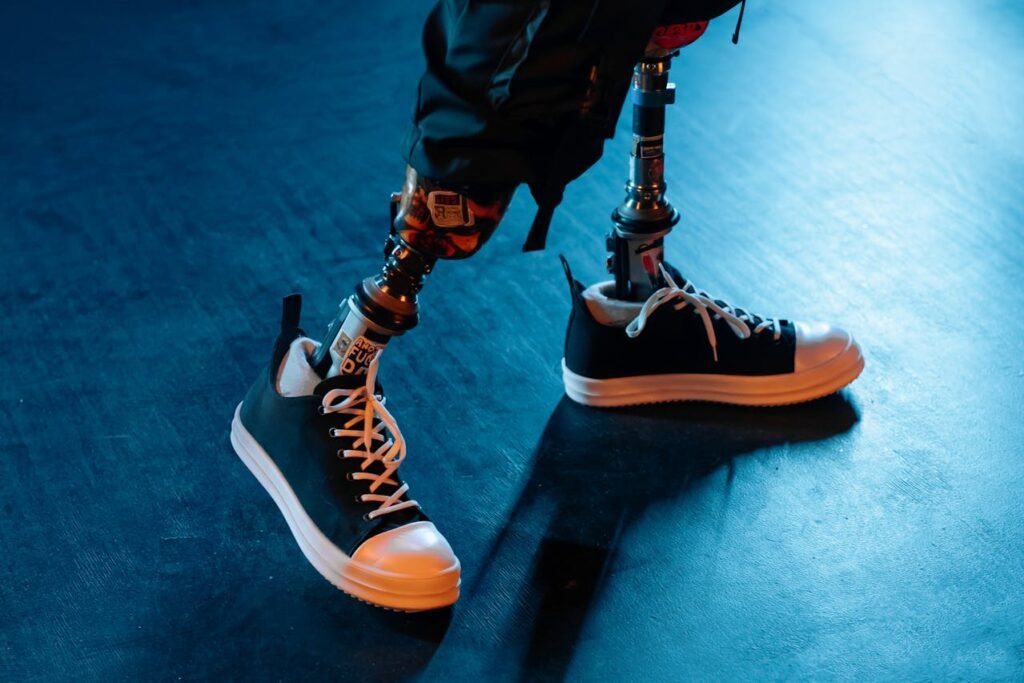
Sustainability and Eco-Friendly Materials
Sustainability is becoming an increasingly important consideration in prosthetic manufacturing. As awareness of environmental issues grows, businesses are exploring ways to reduce waste and incorporate eco-friendly materials into their designs.
For prosthetic knees, this could mean using recyclable components, biodegradable materials, or energy-efficient production methods.
For businesses, aligning with sustainability goals provides a competitive advantage while appealing to environmentally conscious users. Clearly communicating these efforts through marketing campaigns or certifications reinforces the brand’s commitment to responsible innovation.
Enhanced Integration with Wearable Technology
The integration of prosthetic knees with wearable devices, such as fitness trackers or mobile apps, is another trend shaping the industry. By connecting to wearable technology, prosthetic knees can provide real-time data on movement, battery life, and performance metrics.
This information not only helps users optimize their prosthetic’s functionality but also supports clinicians in monitoring progress and making informed adjustments.
Businesses can enhance their offerings by developing user-friendly apps that pair seamlessly with prosthetic devices. Highlighting features like activity tracking, diagnostic tools, or remote updates ensures users see the added value of these connected systems.
Conclusion
Prosthetic knees are more than mechanical devices—they are gateways to independence, mobility, and confidence. By combining advanced engineering with thoughtful design, these devices enable users to overcome challenges and reclaim their lives.
From simple mechanical systems to sophisticated microprocessor-controlled technologies, the evolution of prosthetic knees reflects a commitment to improving user experiences.
For businesses, this space offers immense potential to innovate and make a meaningful difference. By understanding the technologies behind prosthetic knees, investing in cutting-edge research, and prioritizing user-centric solutions, companies can create products that redefine possibilities.
The future of prosthetic knees lies in harnessing the power of neural interfaces, AI, and sustainability to deliver devices that not only restore mobility but also enhance the quality of life for every user.
At Robobionics, we are proud to be at the forefront of prosthetic innovation. Our mission is to design and deliver prosthetic knees that meet the diverse needs of users, combining functionality, comfort, and style.




Thank you for the insightful breakdown of prosthetic knee technologies. Could you elaborate on how advancements in microprocessor-controlled systems, like the C-Leg, have improved user mobility and safety? Additionally, are there considerations for integrating these technologies into prosthetic solutions tailored for users in India, where terrain and daily activities may vary significantly?